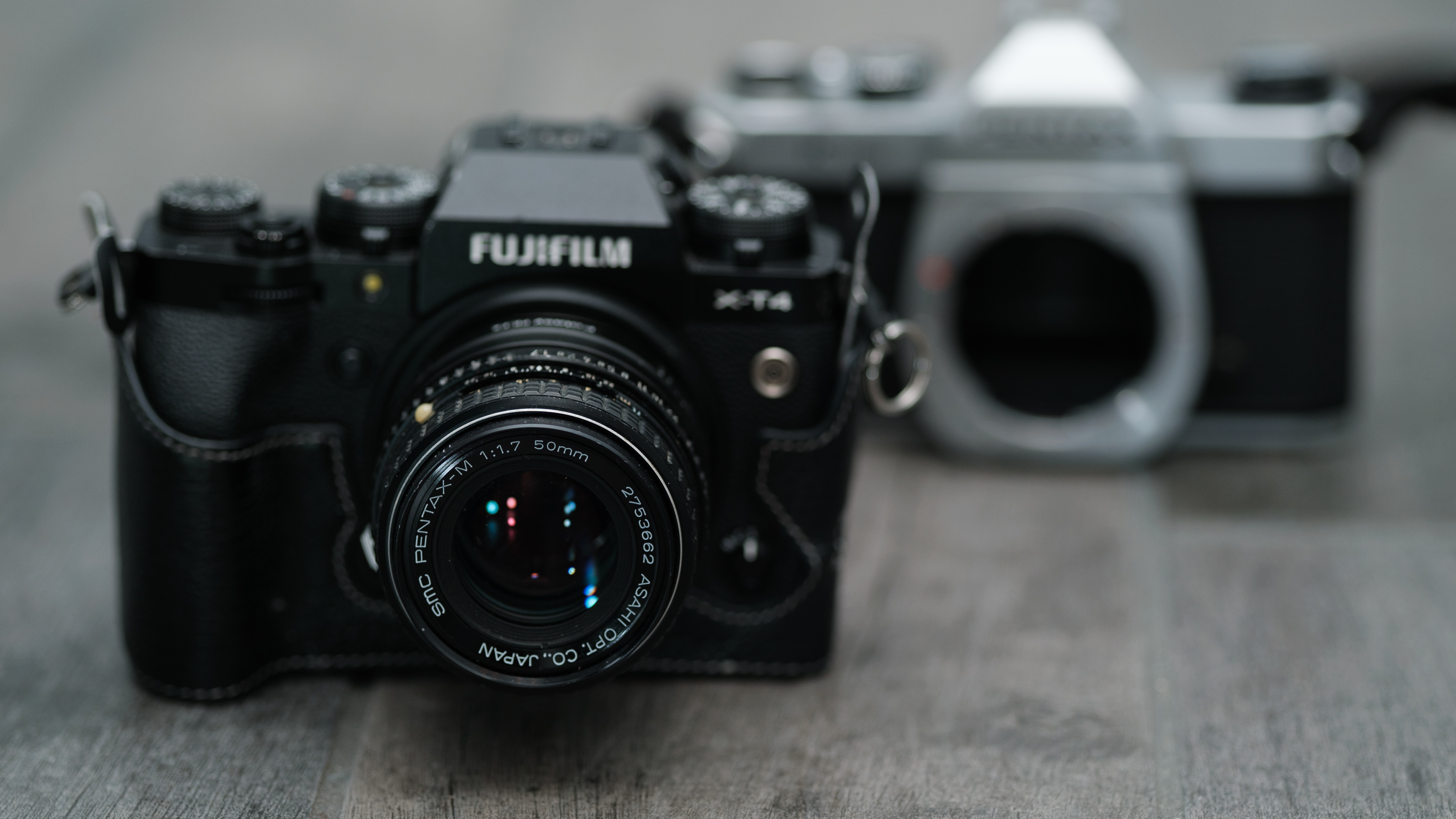Digital Camera World Verdict
It shouldn't come as any surprise that the iPhone 14 Pro Max is an excellent phone. Its camera improves quality across both the primary and ultra-wide with larger sensors, and Apple adds a smart new steady shooting video mode to the mix. It can't compete when it comes to optical zoom, and the lack of a pro mode for manual shooting is a miss. If those issues don't phase you, though, almost everything else about it is good to great.
Pros
- +
Better cameras than iPhone 13 Pro
- +
Excellent portrait mode
- +
Rich styling with IP68 certification
- +
Across-the-board strong performance
Cons
- -
Zoom range isn't competitive
- -
Always-on Display needs refining
- -
High price, especially in the UK
- -
No physical SIM tray in the US
Why you can trust Digital Camera World
Apple is finally bumping up camera resolution for the new iPhone 14 Pro Max after years of 12MP deja vu. Now, there's a 48MP primary camera sensor, as well as a new action mode, for advanced video stabilization. Pixels aren't everything, though, and last year's iPhone 13 Pro and Pro Max are two of the very best iPhones we've tested, and excellent in comparison to their Android peers.
Can the iPhone 14 Pro Max and its camera beat out its predecessor, taking those bigger pixels, and marry them with stellar image processing to turn Apple's latest flagship into the best camera phone of 2022? And how does Apple's latest iPhone stack up against the best of the Android world, like the zoom champion Galaxy S22 Ultra, and the Xiaomi 12s Ultra with its one-inch sensor?
Without ruining the punchline of this review, we love what the 14 Pro brings to Apple's smartphone camera mix, but there's more to the latest Apple upgrade than just imaging. The new phones feature A16 Bionic internals, satellite communication for SOS messaging, car crash detection, and there's that always-on display. And you can't mention the iPhone 14 Pro or Pro Max without talking about the new Dynamic Island – an ingenious combination of marketing and UX design.
Starting at $1,199 / £1,199 for the 128GB version, is the new 14 Pro Max an overpriced upgrade, or is it the iPhone every photographer wants in their pockets or palms at all times?
iPhone 14 Pro Max design and screen
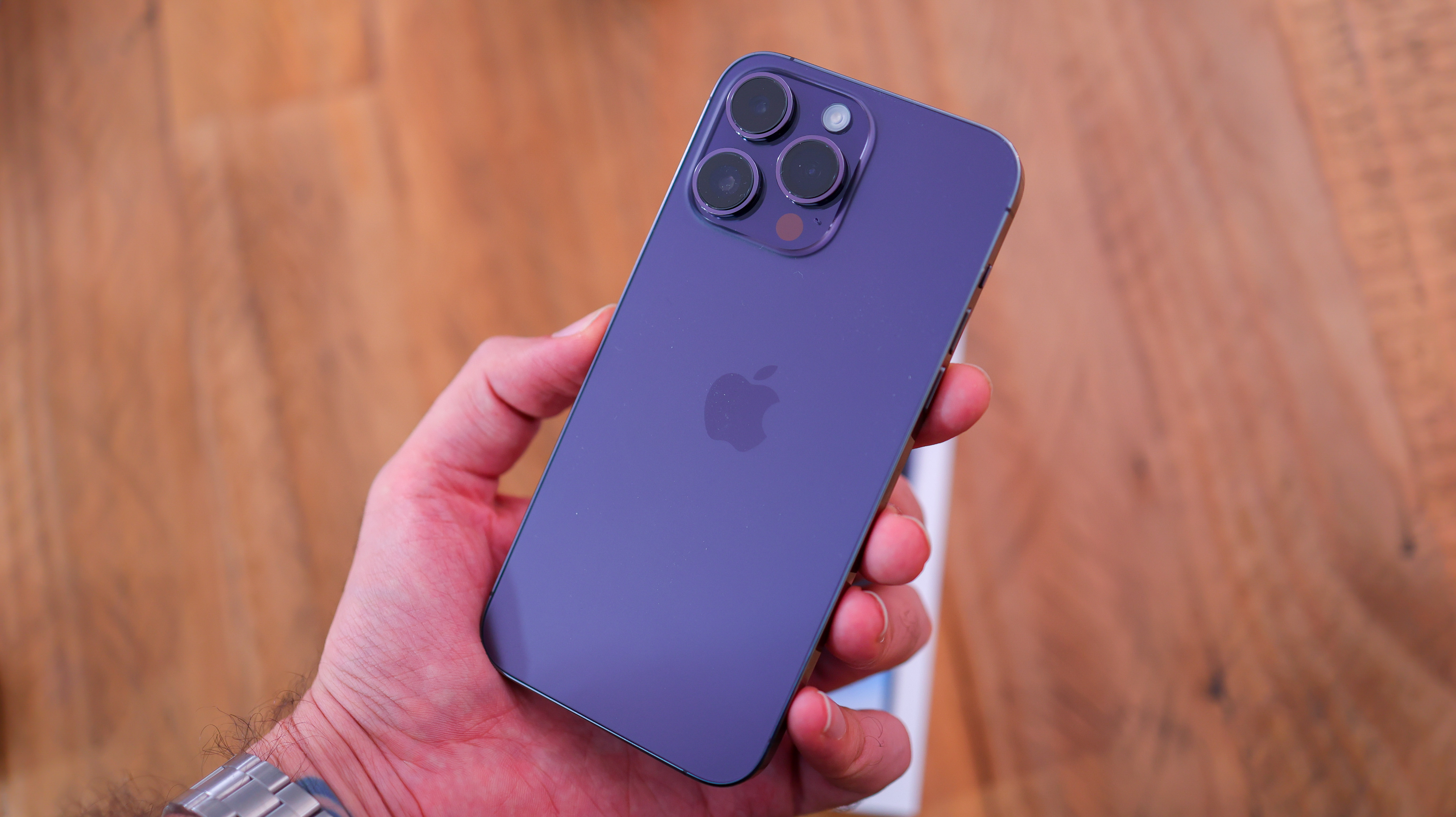
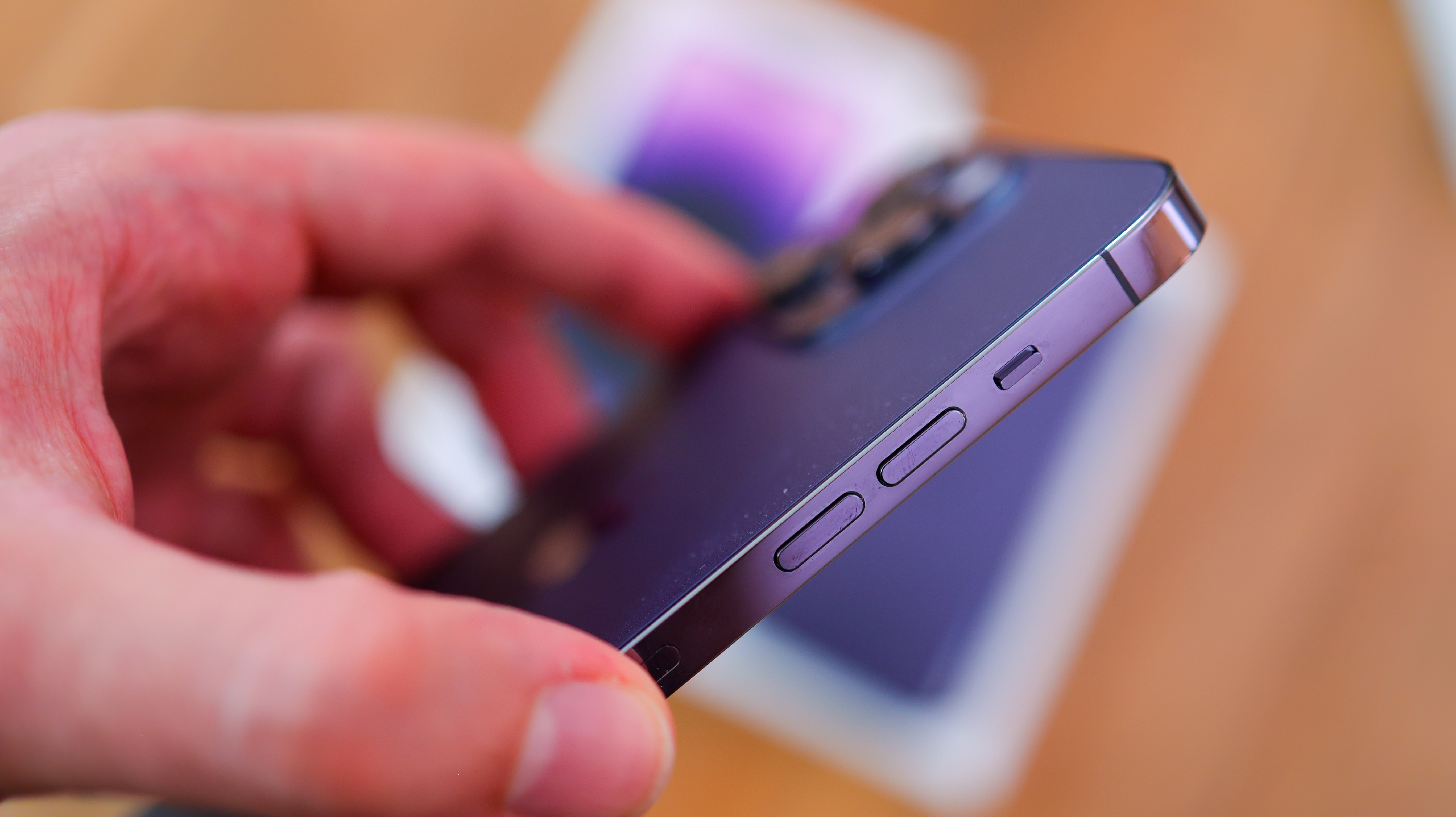


The iPhone 14 Pro Max is strikingly similar to past iPhones, though the new, Deep Purple option has been turning heads in our week with it, with people commenting on the color almost as much as the Dynamic Island. A subtle mauve in certain lights, metallic aubergine in others, and purple tinted space grey in dimly lit environments, it's definitely an elegant option.
Also available in Gold, Silver, and Space Black, whichever you go for, the iPhone 14 Pro Max looks premium, but the Purple one's definitely the most enticing in the flesh as far as we're concerned.
The phone's frosted back fends off fingerprints well, while the polished stainless steel frame, which is color-matched to the phone's back with a subtle tint to it, absolutely loves them. Irrespective, you'll likely want to protect your iPhone 14 Pro Max with a case, given the fact iPhones hold onto their resale value as well as they do.
The best camera deals, reviews, product advice, and unmissable photography news, direct to your inbox!
In addition to picking up one of the best iPhone 14 Pro Max cases, we'd also suggest a screen protector. We opted for the UltraGlass Treated Screen Protector from Belkin, pictured below, which is recommended by Apple in-store alongside the new iPhones. It was easy to install and is barely noticeable once in place.
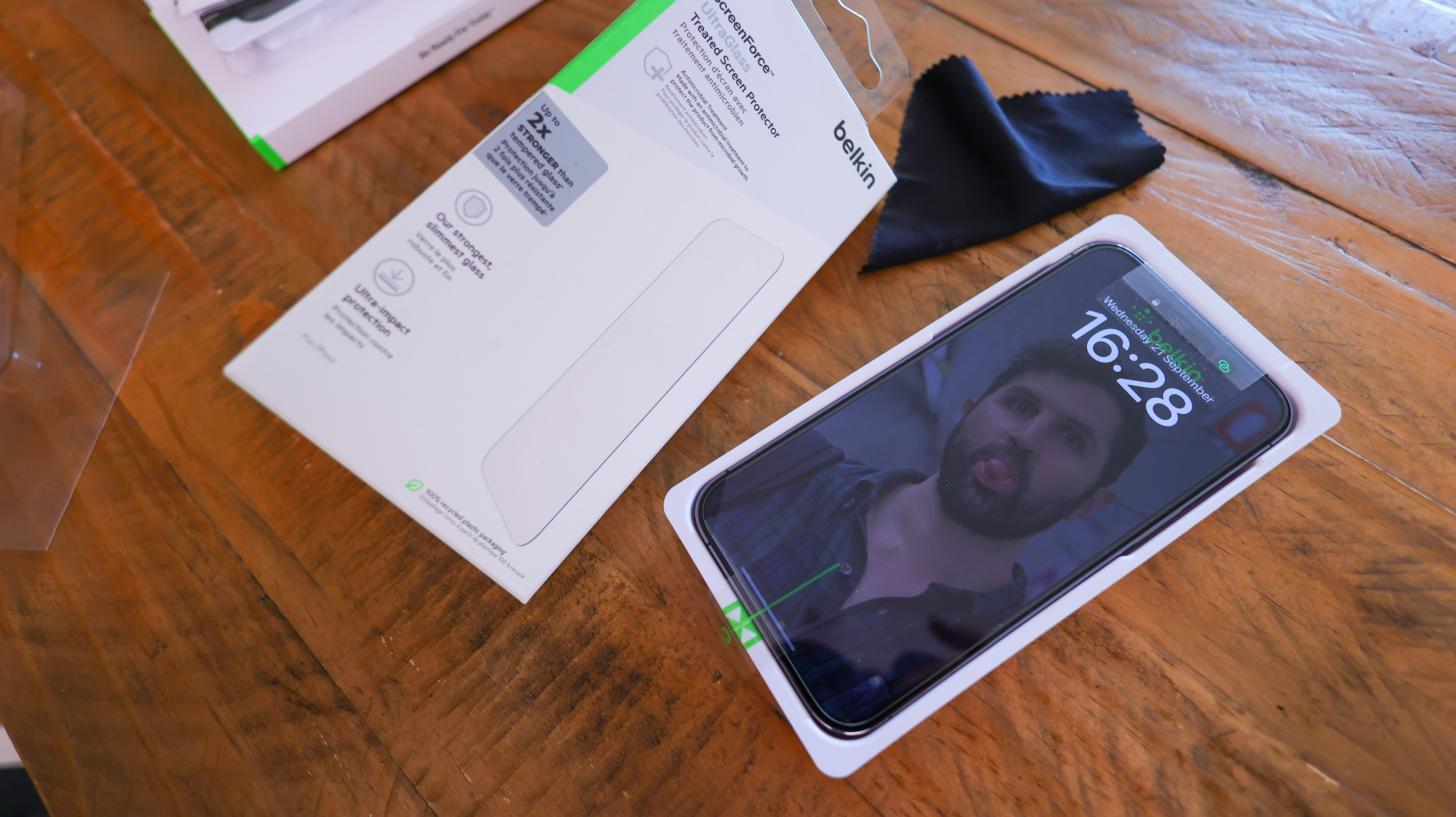
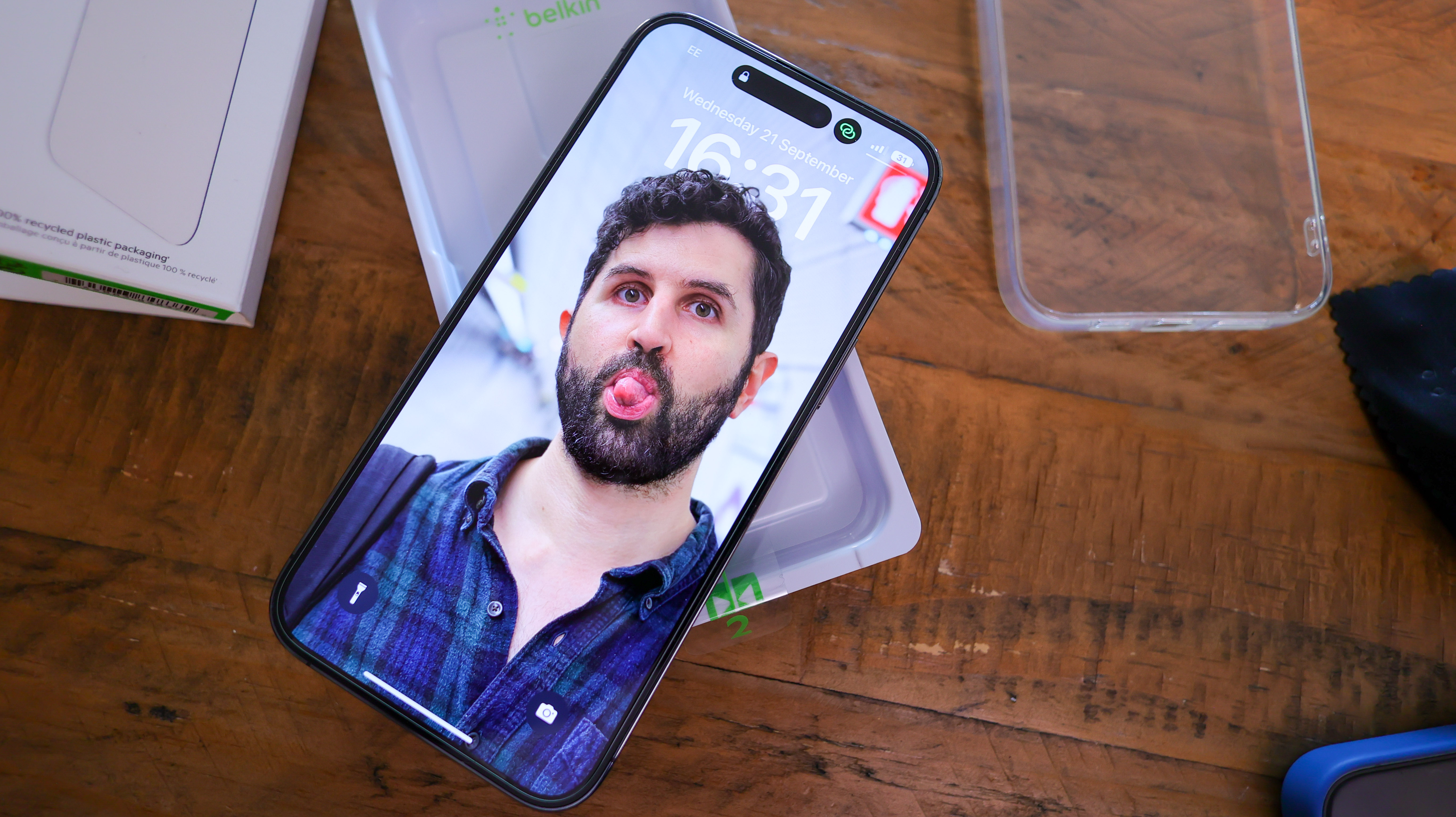
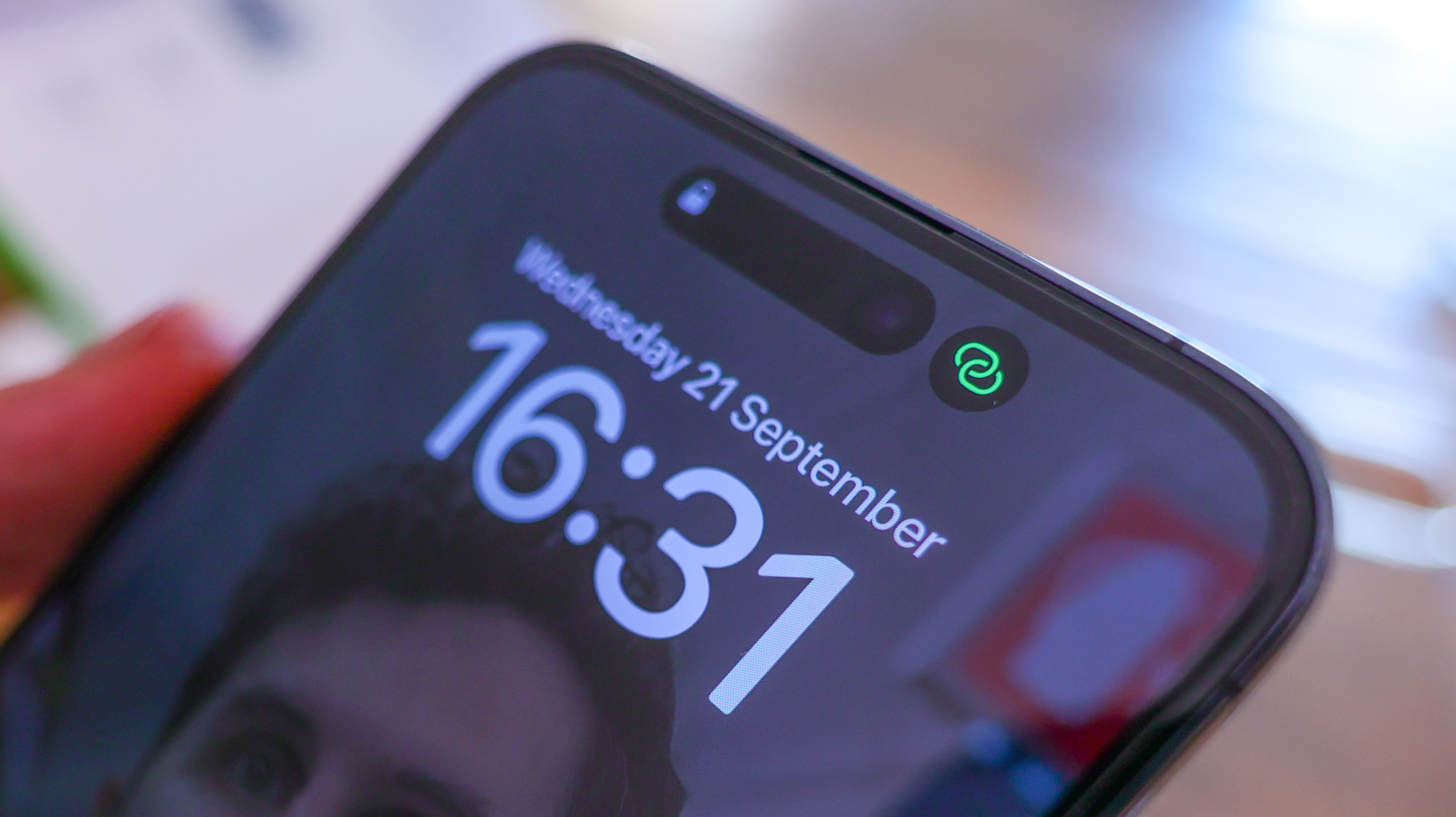
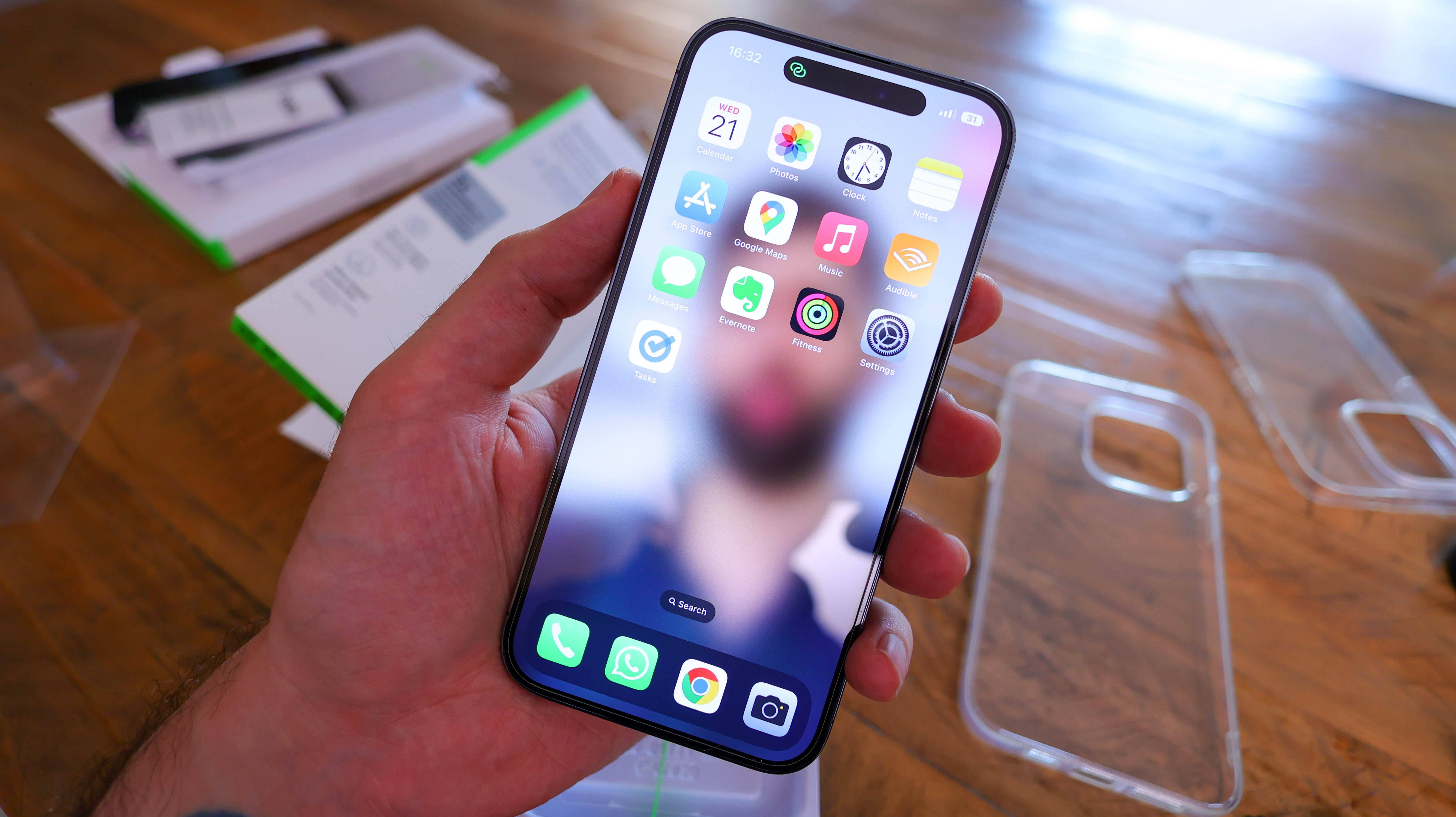
The largest and heaviest iPhone of the pack, the 14 Pro Max is a serious paperweight, weighing the same hefty 240g as the iPhone 13 Pro Max. Despite not being heavier, the new iPhone 14 Pro Max is thicker than its predecessor, thanks to the new cameras jutting out that bit more.
The new iPhones all have the same button configuration we're used to: a power button on the right, volume buttons on the left, and an alert slider. The new line is IP68 water resistant and is also protected by a scratch-resistant Ceramic Shield front panel of glass.
The main design difference this year across both 14 Pro models comes in the form of the Dynamic Island, which is a pill-shaped punch hole selfie camera mix in the top center of the screen.
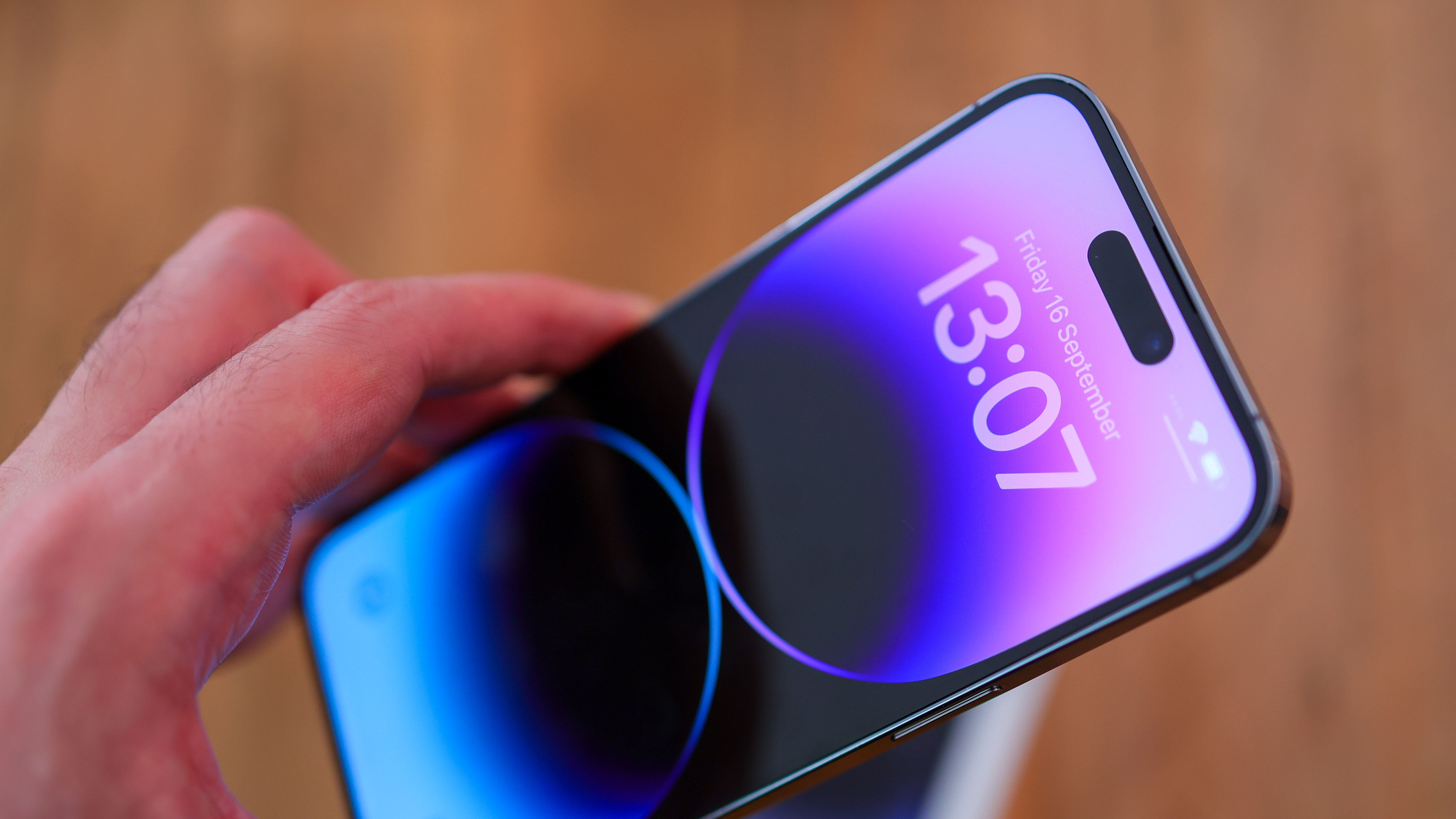
With a 6.7 screen, Apple's iPhone 14 Pro Max takes on the Samsung Galaxy S22 Ultra, and other oversized flagship phones. Not pulling any punches, the 14 Pro Max's screen is best-in-class in key areas, with a maximum brightness of up to 2000 nits, beating even Samsung's finest flagship display.
More than just easy to see in bright sunlight, the phone's auto-brightness is also very responsive. This even changes the brightness when the always-on display is active, so you should still be able to see your lock screen when the sun's out.
The 14 Pro Max's Super Retina XDR display doesn't just get very bright, it's also nice and sharp with its 2796 x 1290 resolution and a 460 PPI pixel density.
Add HDR credentials and a 120Hz refresh rate to the mix, and the iPhone 14 Pro doesn't tread any new ground, but it does check all the flagship boxes, and unlike many Android HDR phones, it's supported by Amazon Prime Video and Netflix.
It's worth focusing on the Dynamic Island and the Always-on Display in a bit more detail. ‘Dynamic Island’ is a fancy term for the pill-shaped cutout in the top center of the screen. While the software enhancements within iOS 16 help turn it into something pretty fun, the size of the cutout shouldn't be downplayed. It does interrupt full-screen content, and despite looking cool when interacting with the interface, watching videos took us a bit of time to get used to.
As for the Always-on Display, this is a dimmed-down version of your lock screen, and it takes over the whole screen. While Android always-on displays (also called AODs) have been displaying a few subtle nuggets like the time and date for years, Apple's take on AODs is extreme, either on – slightly illuminating the whole screen, or off – not activating at all. We wish there were an Android-a-like middle ground. On the plus, the AOD does turn off during bedtime hours which you can set, when in a pocket, or when the phone's upside down.
As samey as the style of the new iPhone 14 Pro Max is, and as much as we’re talking about niggles, we are nitpicking. Apple has made a good-looking, premium phone with a brilliant display.
iPhone 14 Pro Max camera specs
The iPhone 14 Pro Max's camera is a serious spec bump for Apple, and on paper, the most impressive camera we've seen in an iPhone. While last year's iPhone 13 Pro and Pro Max feature humble 1/1.7-inch sensors, for 2022, Apple introduces a large 1/1.28-inch sensor in the iPhone 14 Pro Max.
The new, larger sensor is matched with a 48MP high resolution, an f/1.78 aperture lens with a 24mm focal length, second-generation sensor-shift optical image stabilization, a seven-element lens, and 100% focus pixels. This means the iPhone's camera competes on specs, not just software and tuning. It shoots 12MP photos by default but can capture 48MP images if you fire up RAW mode.
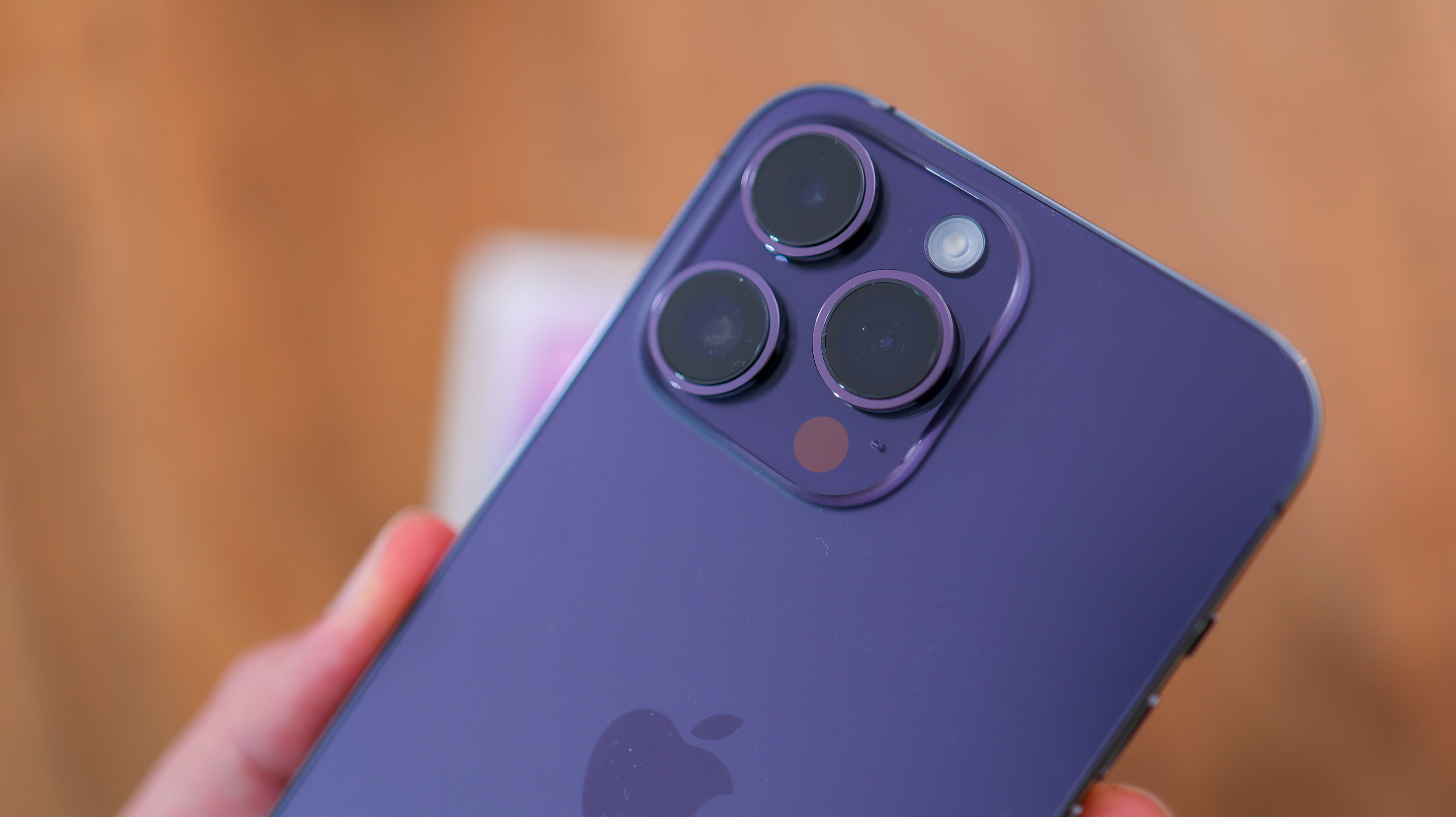
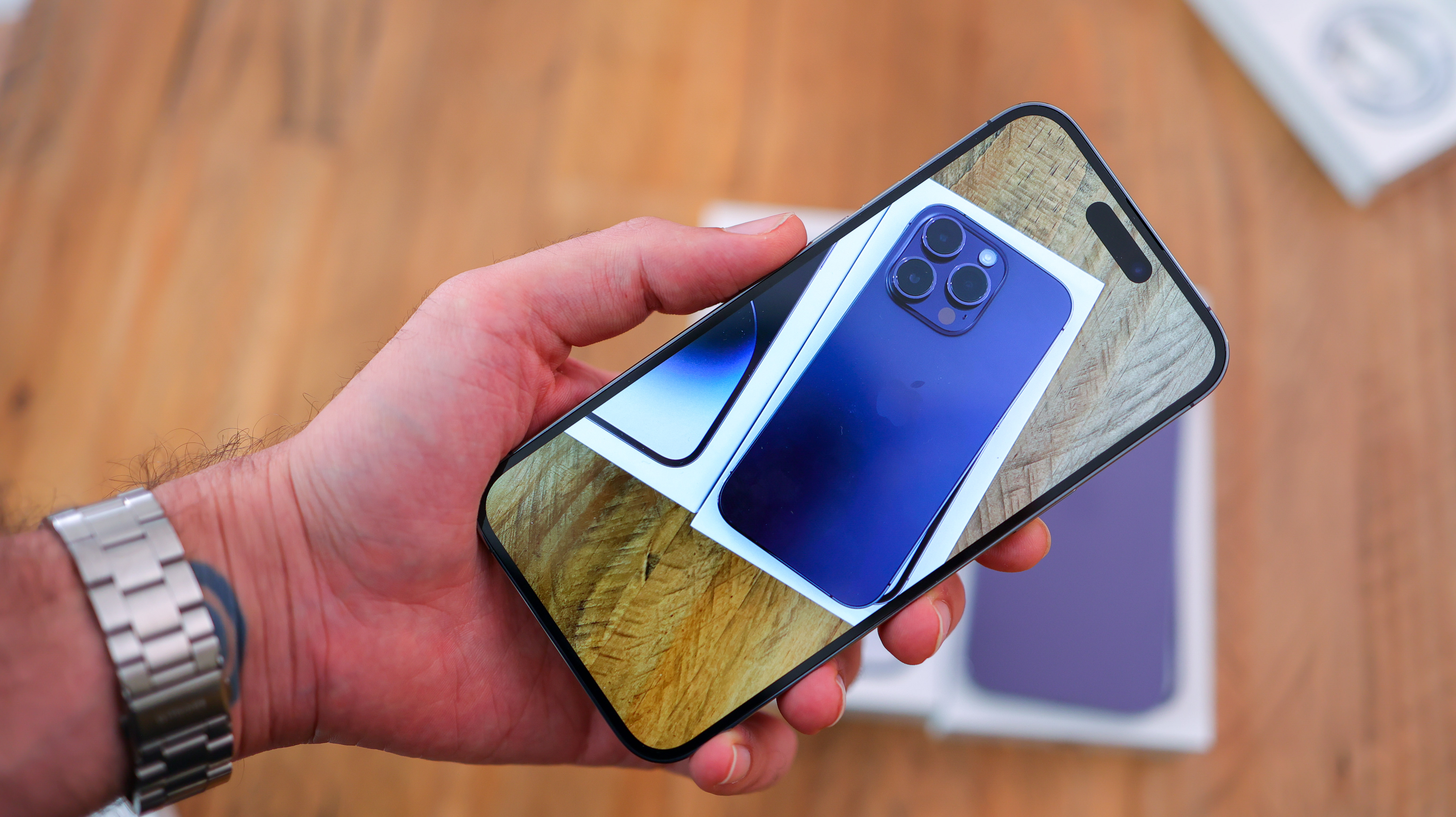
The iPhone 14 Pro Max also introduces an updated ultra-wide camera, increasing its 12MP sensor to 1/2.55 inches, and matching it with a 13mm focal length. It also benefits from 100% of its pixels being focus pixels, and has a six-element lens and autofocus.
Apple takes advantage of the main camera's high-resolution sensor when it comes to its telephoto offering. Adding a digital lens, the iPhone 14 Pro Max crops into the inner 12MP of the main camera sensor to create a native two-times telephoto reach while retaining the same 12MP resolution the iPhone shoots in by default. This punches into 48mm – perfect for portraits.
For objects that are further away, the 14 Pro Max gets the same 12MP three times telephoto camera as the 13 Pro Max, with a 77mm focal length and an f/2.8 aperture, as well as OIS, and a six-element lens.
The cameras benefit from sapphire crystal lens cover protection and a LiDAR scanner, which helps with night mode portraits. Another noteworthy addition, the iPhone 14 Pro introduces a new action mode, which adds GoPro-style stabilization to 2.7K video content for high-motion shooting.
The selfie camera on the iPhone 14 Pro Max has been updated with autofocus, however, doesn't appear to pack a new, larger sensor or benefit from a megapixel bump. Instead, it features the same 12MP camera with an f/1.9 aperture introduced on the iPhone 11 Pro in 2019, only now, it can focus in on near or far objects.
iPhone 14 Pro Max camera review
Looking at photos shot on the iPhone 13 Pro Max and 14 Pro Max's primary cameras, you'll instantly notice the 14 Pro Max's wider angle lens. Dropping from 26mm to 24mm while that might not sound like much, below 30mm, it's a marked difference.
Wider angles usually produce a less shallow depth of field when taking close-up photos, however, the 14 Pro Max stacks up well when it comes to capturing soft, dappled backgrounds thanks to its larger sensor.
Where the iPhone 13 Pro Max wins out, however, is when it comes to macro photography using the main camera. It's able to focus at a much closer focal distance, so the 14 Pro line isn't a clean sweep upgrade across the board.
Whichever phone you use, when you get super close to an object, the camera automatically switches to the ultra-wide camera for macro capture as near as around 8cm. Here, the ultra-wide of the 14 Pro outperforms that of the 13 Pro, with superior detail and shallower depth.



Apple hasn't shied away from sharpening and boosting its camera phones' photos in the past, however, the 14 Pro Max packs amongst the most natural-looking processing we've seen from an iPhone to date.
Compared to the 13 Pro Max and non-Pro iPhones, the 14 Pro Max dials back contrast but still creates a dynamic, pleasing image that's full of detail. This is specifically the case when it comes to the main camera.
All three cameras, which shoot at four preset focal lengths, do a very good job when it comes to white balance and exposure. Colors across the three cameras are consistent in all but the most challenging conditions, and dynamic range is strong too.
There's no getting around the fact that, while the ultra-wide and primary cameras have seen huge upgrades, the telephoto camera falls behind much of the competition, including the Honor Magic 4 Pro and Xiaomi Mi 11 Ultra.




Nighttime and mixed light photography is another area the iPhone 14 Pro Max does a great job. It's able to intelligently assess how long to keep the shutter open with its automatic night mode, recognize if the phone is steadied on a surface, and create an evenly exposed photo free of clipping and detail-rich shadows.
As you can see below, when the lights drop, the phone can get confused when it comes to white balance across the telephoto range. Nevertheless, each individual photo is a standalone strong image.




One of the most impressive aspects of the new 14 Pro Max camera is the resolved detail when grabbing RAW photos. Captured at 48MP, as you can see in the example below, the new iPhone produces photos that are much better suited to cropping into than the 12MP RAW photos from the iPhone 13 Pro Max. The images below also illustrate how the new sensor is better able to handle more pared-back processing.
If you can get the phone on a surface or tripod, everything from landscapes to family group shots are a great opportunity to flex the 14 Pro's RAW capture. Matched with an Apple Watch, which can act as a remote shutter complete with a wrist-based viewfinder, the 14 Pro Max is an excellent photography tool.

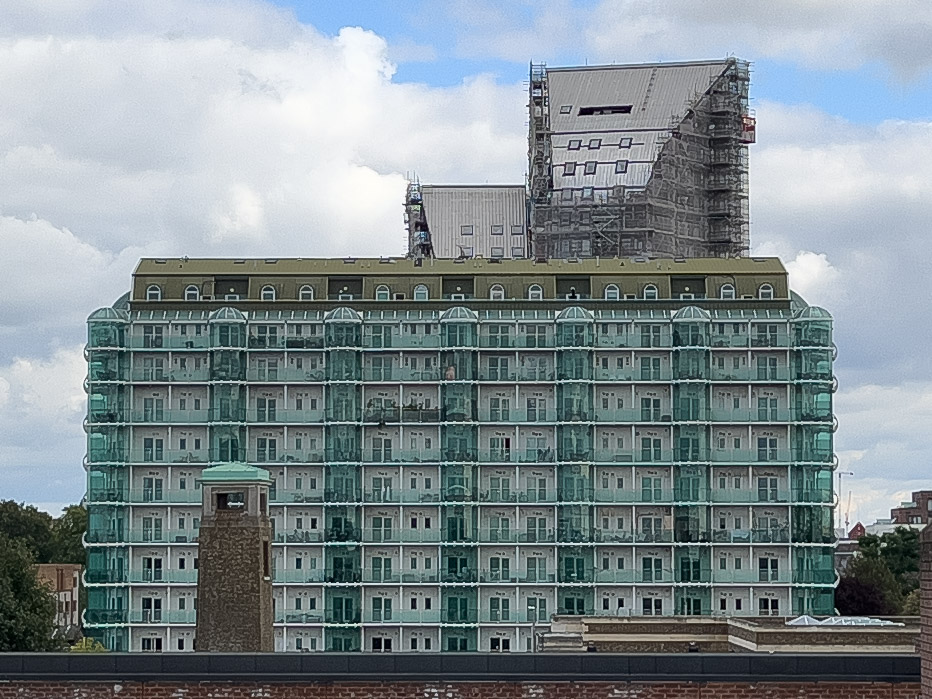
On top of an excellent portrait mode on the new iPhone 14 Pro Max, complete with impressive layer detection and versatile effects, the phone brings back Cinematic Mode, which is a video portrait mode of sorts, as well as Panorama, Slow-mo, and Time-lapse. There's no Pro Mode out of the box, though you can download third-party apps that enable manual photography and video capture, and we'd suggest photography enthusiasts do this.
Video shot on the iPhone 14 Pro Max using the primary camera looks great, even when the lighting isn't perfect. The ultra-wide and telephoto cameras aren't quite so capable in darker scenes, and neither is the Action Mode, which fires up near-GoPro-grade levels of stabilization to keep the shot steady. Still, when the light is bright it's a welcome addition that does a good job of holding everything together.





The 14 Pro Max's selfie camera has been upgraded with autofocus, but it doesn't feature a larger sensor or a wider aperture, and in turn, its core photo quality is only incrementally better than that of past iPhones when it comes to detail and low-light performance. Steady it and get your subjects to keep still, and it will perform admirably. Dimly lit scenes with moving subjects, however, won't produce a winning shot.
iPhone 14 Pro Max additional specs
Powering the iPhone 14 Pro Max is the new A16 Bionic chip, which Apple claims is the most powerful of any smartphone, and our benchmarks would back this up. So too would our real-world use with the phone, specifically, playing back titles like Genshin Impact and Monster Hunter. We experienced no slowdown, it made short work of editing 4K video and exporting RAW photos, and the UI in general flowed, helped by the smooth 120Hz screen.

Running iOS 16, currently rolling out to older-gen iPhones right now with features like smart, customizable lock screens, it's the latest software from Apple. To get the full benefit of the OS – namely that always-on display and Dynamic Island, you'll need a 14 Pro or Pro Max.
With a starting capacity of 128GB storage, and going up to 1TB, in its highest capacity, the iPhone 14 Pro can cost as much as $1,749 / £1,749 – a huge sum of cash.
Apple claims the 14 Pro Max charges up to 50 percent in as little as 30 minutes, and the phone also supports Qi wireless charging and MagSafe charging too. A full charge took us almost two hours, though you can charge up by around 50 percent in 30 minutes. You can expect a full day of power from about 60-80 percent charge, even with the always-on display active. In turn, just like the 13 Pro Max, the 14 Pro Max is a battery champ.
US customers lose out on the SIM card tray altogether, and the phone is 5G compatible globally. Wherever you buy your iPhone, though, you'll gain access to a new satellite communication system and crash detection.
Why would you want to communicate with satellites? To contact emergency services when you have no signal – and the feature only works when you have a very clear view of the sky. The second feature, crash detection, can recognize when you've been in a high-impact crash, and automatically calls for help, unless you stop your phone in time.
iPhone 14 Pro Max verdict
If you shoot RAW photos and need to, on occasion, grab magnificently detailed shots, the iPhone 14 Pro Max is a worthwhile upgrade, even if you've got the 13 Pro Max, purely owing to the larger camera sensors on the main and ultra-wide cameras. This improves the scope for high-detail, cropable RAW photos greatly, and the natural-looking depth of field we've been able to capture despite the phone's wider angle is also welcome.
It isn't a clean sweep on the camera front. The main camera is an inferior macro camera to that of the iPhone 13 Pro Max. The telephoto reach also pales in comparison to many Android phones.
So if you're not swayed by that new camera system, aren't an action adventurer in need of satellite comms saving the day, and don't live on the sun and need 2000 nits of high screen brightness maximizing your screen visibility, then you would be well off holding onto your iPhone 13 Pro Max, or indeed opting for one over the 14 Pro Max. It's aged incredibly well, and costs significantly less. If, however, you want the very best iPhone money can buy, the 14 Pro Max is it.
We've also reviewed the iPhone 14 Pro. Discover the whole Apple iPhone 14 lineup, and see how the iPhone 14 Pro compares to the iPhone 13 Pro – is it worth the upgrade?
Basil Kronfli is a freelance technology journalist, consultant, and content creator. He trained in graphic design and started his career at Canon Europe before moving into journalism. Basil is also experienced in video production, independently running the YouTube channel TechEdit, and during his time at Future, he worked alongside the Digital Camera World team as a senior video producer.




